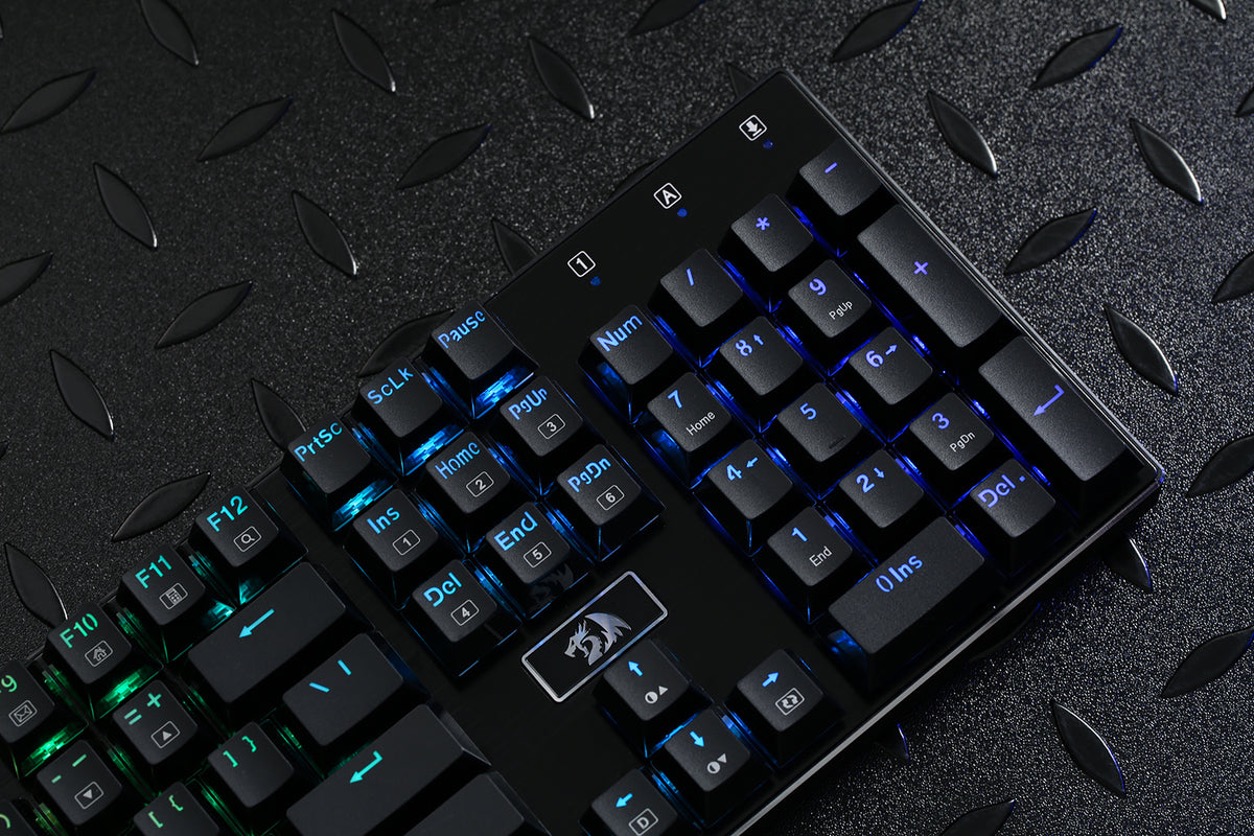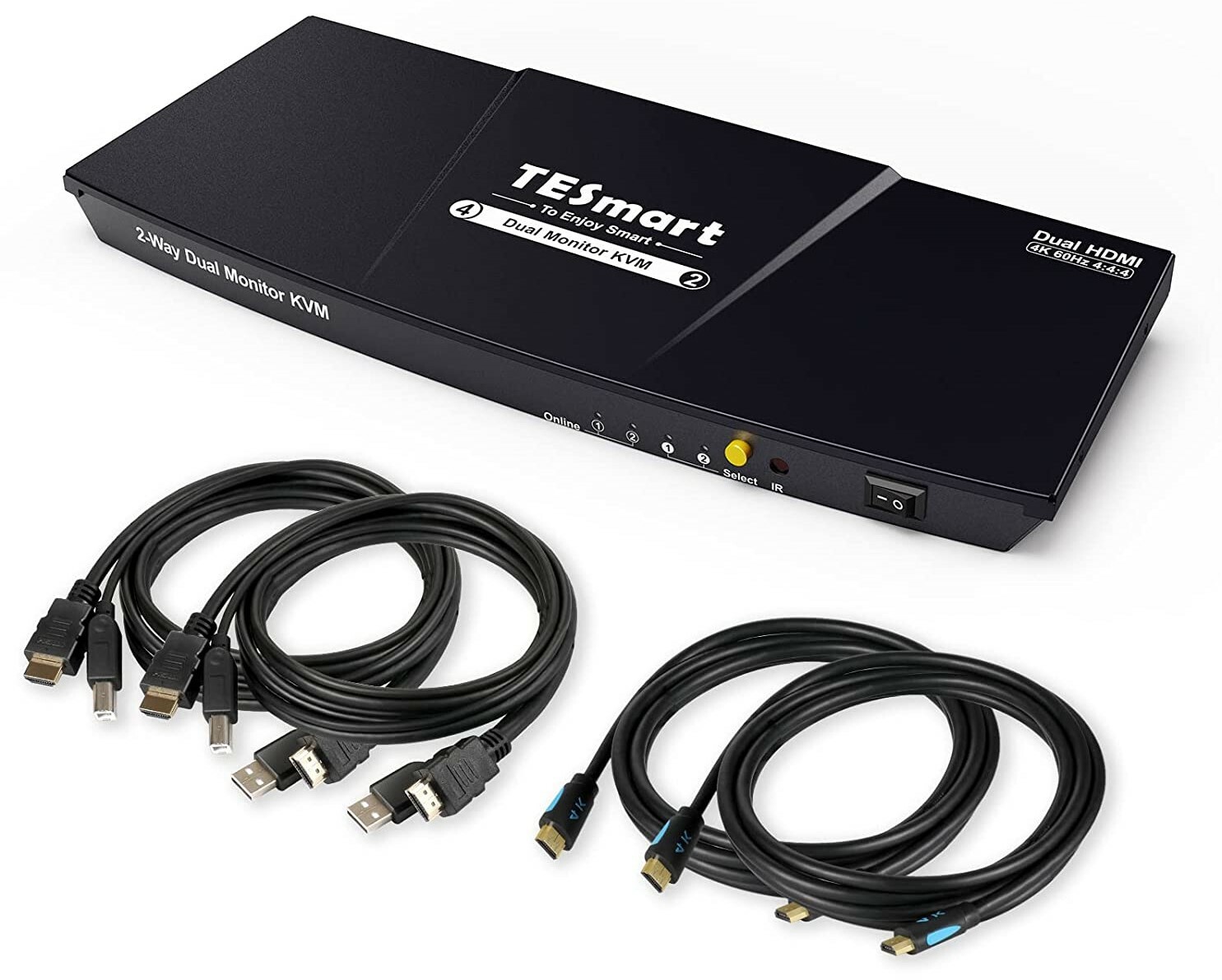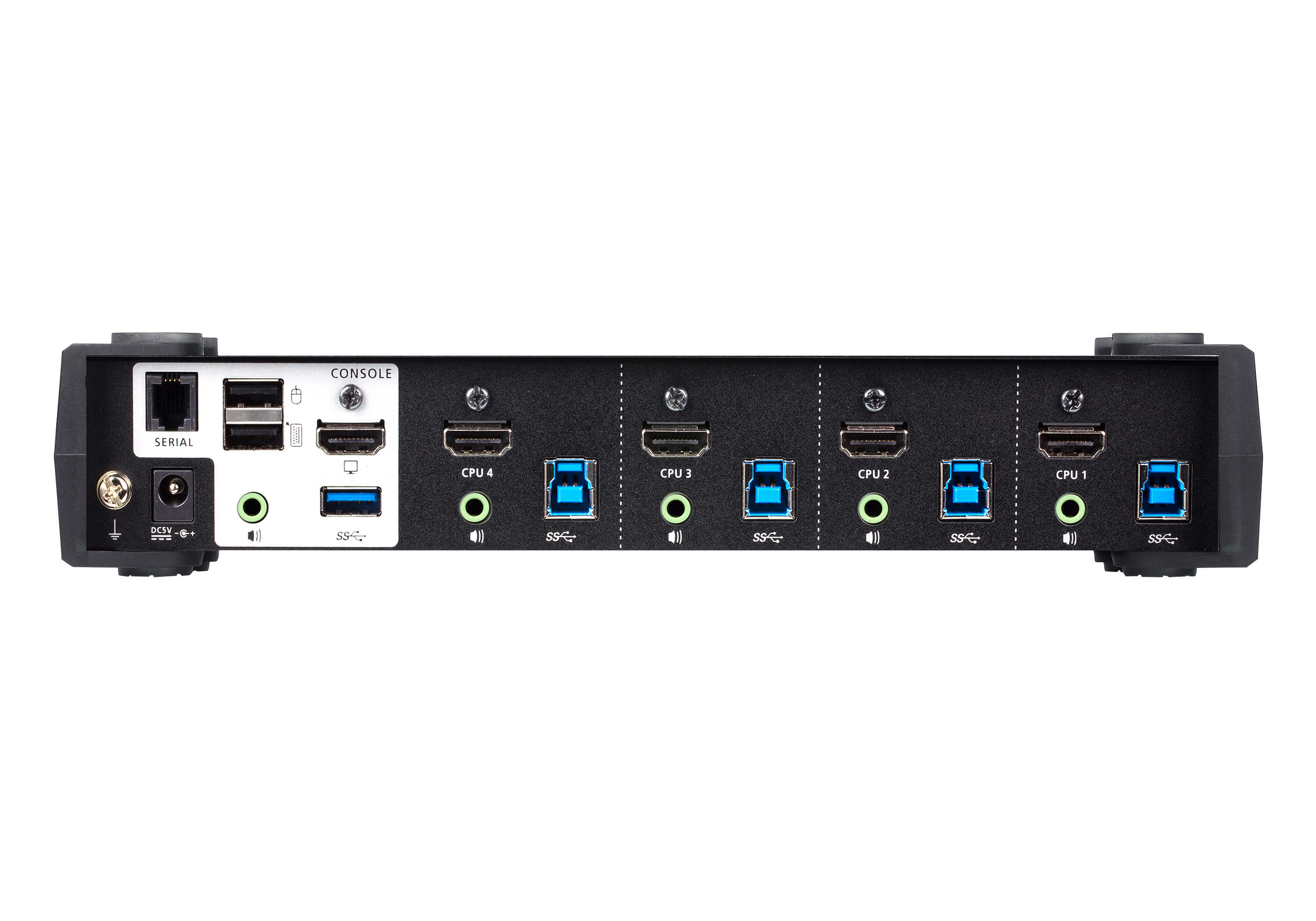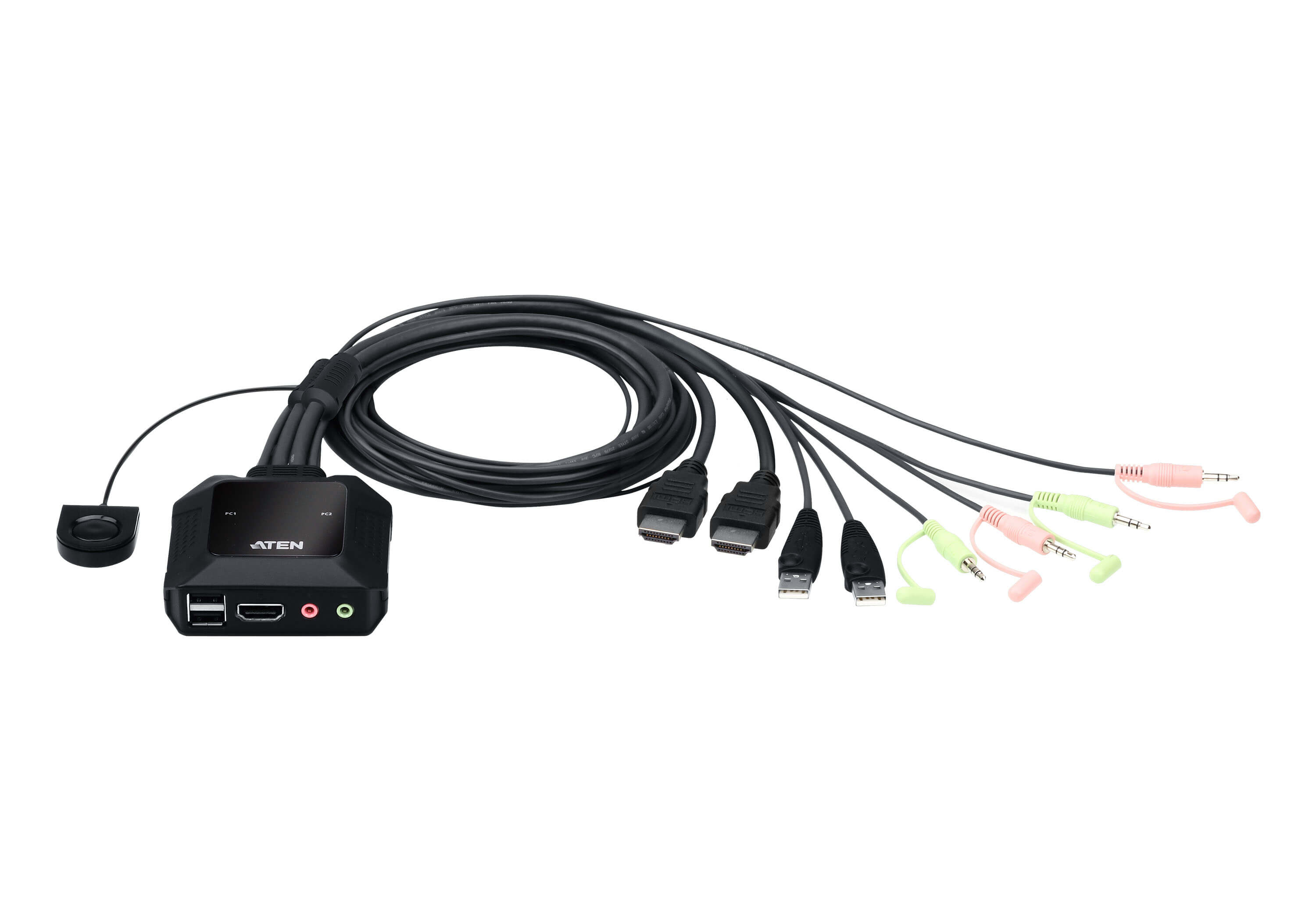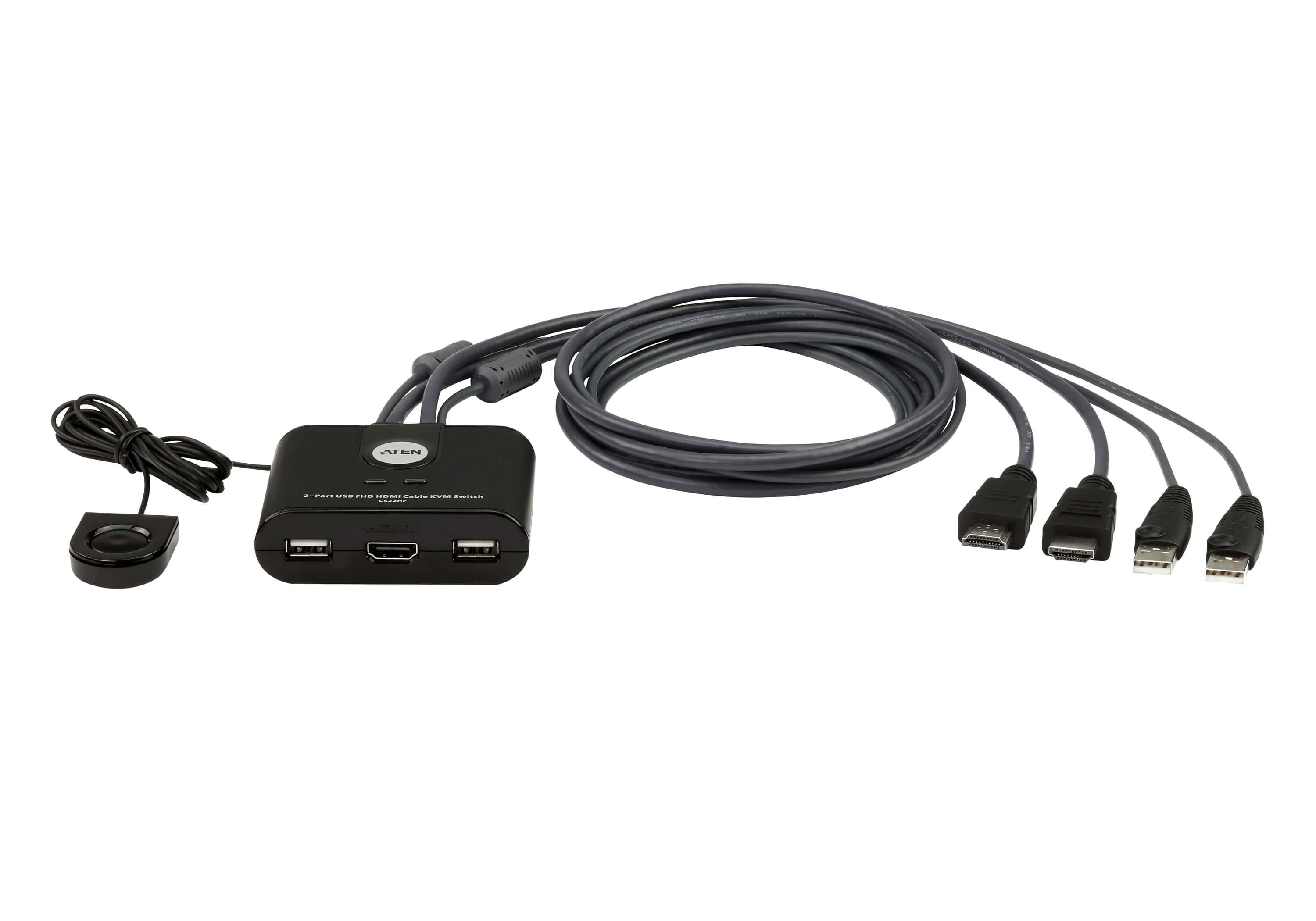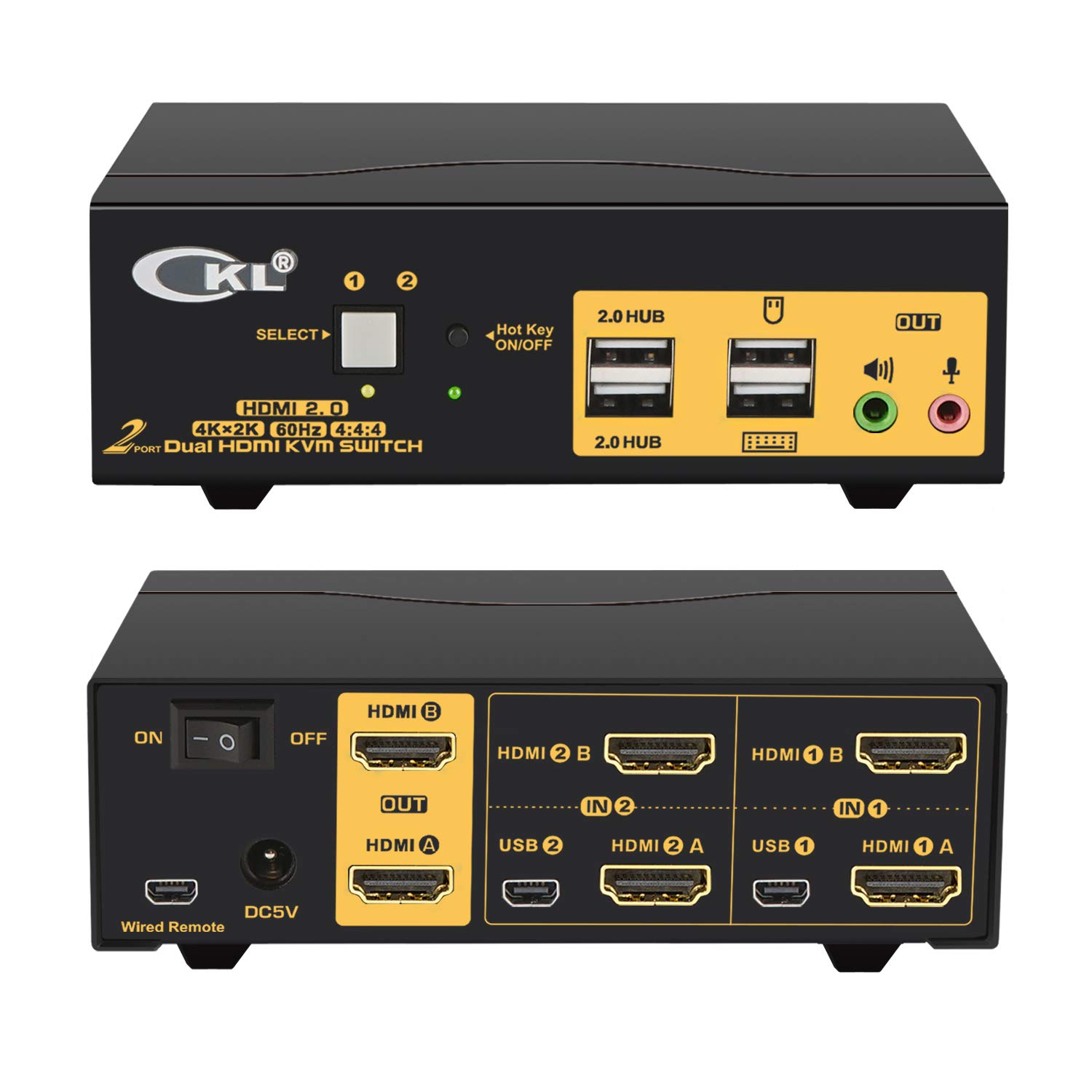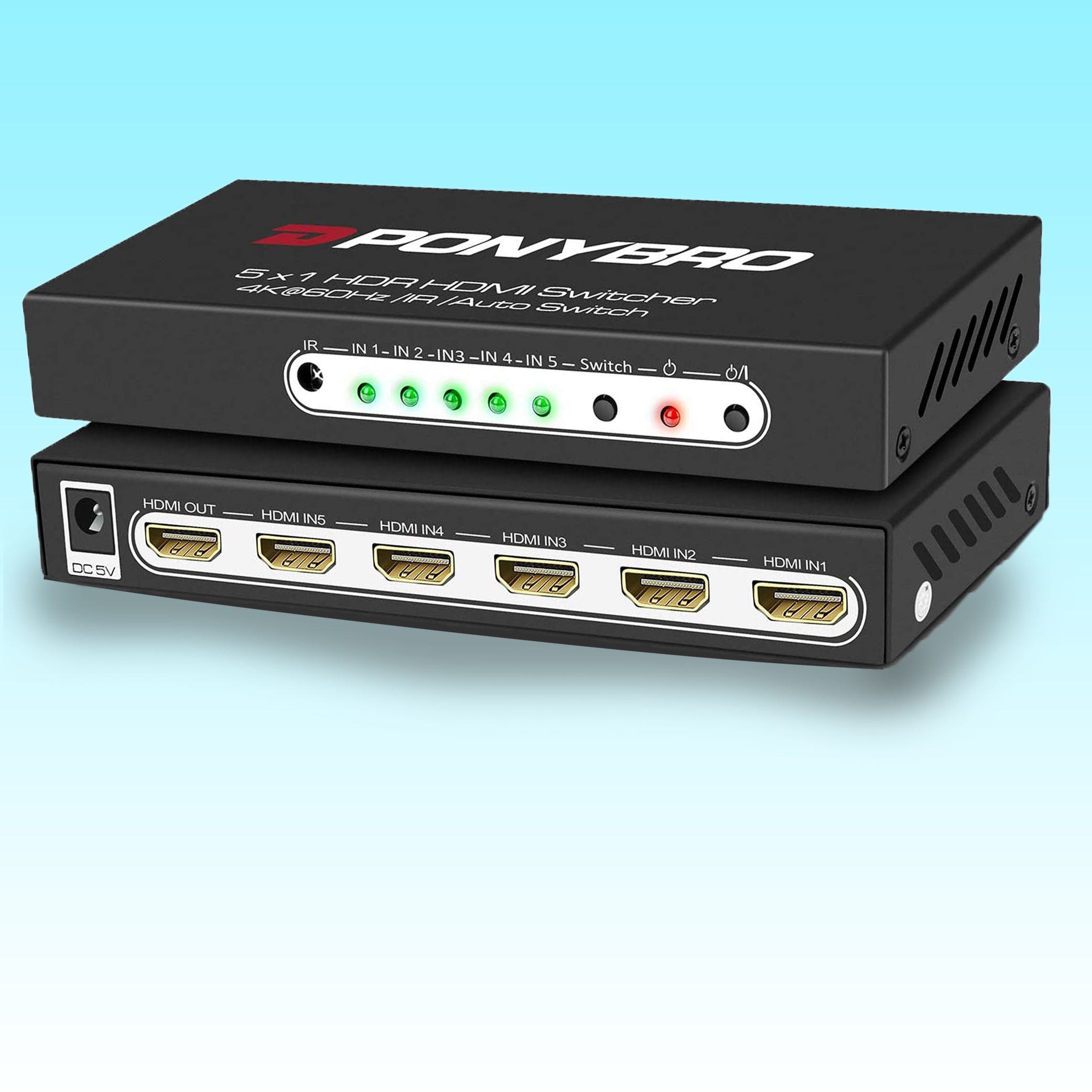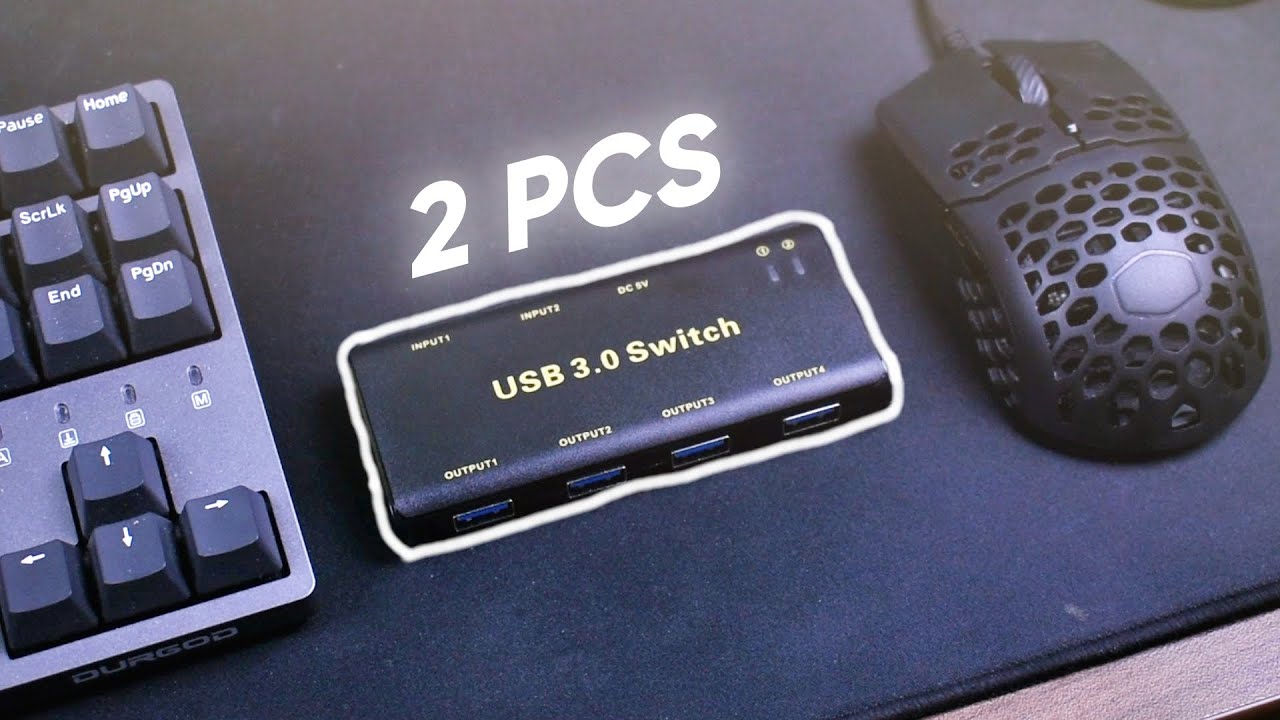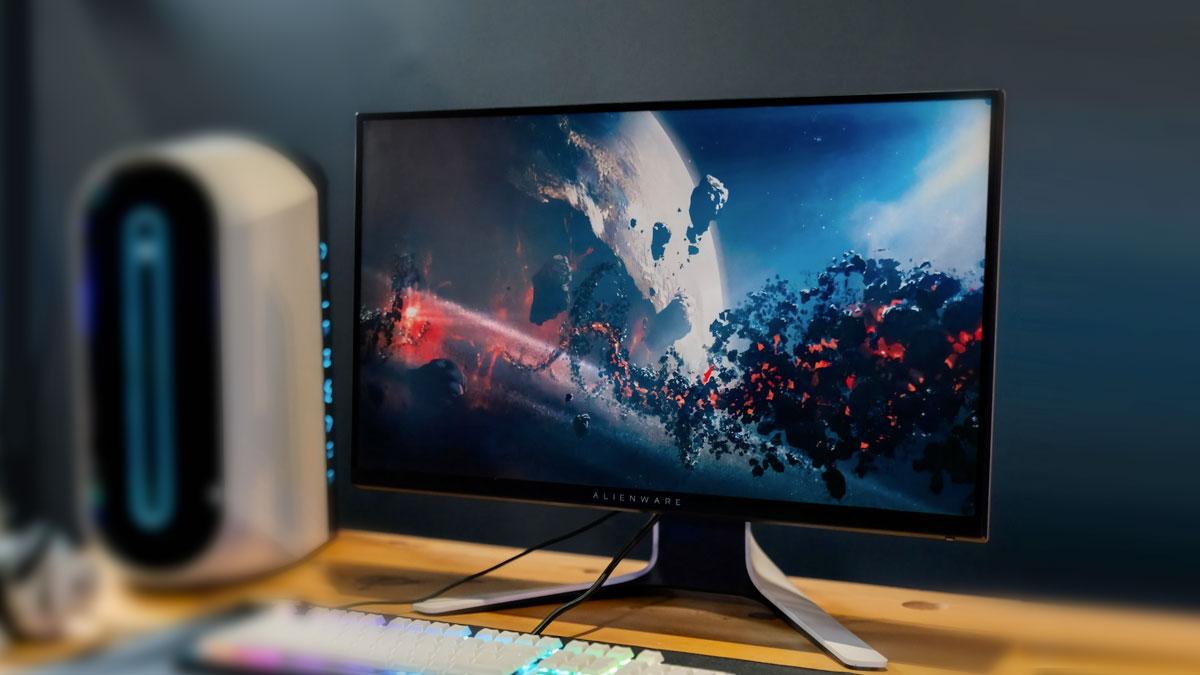Introduction
Gaming enthusiasts often seek ways to optimize their gaming setups for seamless performance and enhanced convenience. One common challenge is the need to switch between multiple computers while using a single keyboard, monitor, and mouse. This is where a KVM (keyboard, video, mouse) switch comes into play, offering a practical solution to streamline the gaming experience across different systems.
The integration of a gaming keyboard with a KVM switch presents a unique set of considerations and benefits. By understanding the functionality of KVM switches, selecting the right gaming keyboard, and configuring the setup effectively, gamers can elevate their gaming experience to new heights. This article delves into the intricacies of using a gaming keyboard with a KVM switch, providing valuable insights and practical tips to help gamers make the most of this setup.
As we delve deeper into the world of gaming keyboards and KVM switches, it's important to recognize the potential advantages and challenges that come with this configuration. From seamless multitasking to the ability to switch between gaming platforms with ease, the combination of a gaming keyboard and a KVM switch offers a myriad of benefits. However, it's crucial to navigate the selection and setup process thoughtfully to ensure optimal performance and compatibility.
In the following sections, we will explore the fundamental aspects of KVM switches, guide gamers through the process of choosing the right gaming keyboard, and provide step-by-step instructions for connecting and configuring the setup. Additionally, we will offer valuable tips to enhance the overall gaming experience when using a gaming keyboard with a KVM switch.
By the end of this article, readers will gain comprehensive knowledge of how to seamlessly integrate a gaming keyboard with a KVM switch, empowering them to create a versatile and efficient gaming environment that caters to their diverse gaming needs. Let's embark on this insightful journey to unlock the full potential of gaming keyboards in conjunction with KVM switches.
Understanding KVM Switches
Before delving into the intricacies of integrating a gaming keyboard with a KVM switch, it’s essential to grasp the fundamental functionality and benefits of KVM switches. A KVM switch serves as a pivotal tool for individuals who need to operate multiple computers from a single station, seamlessly toggling between systems without the need for additional peripherals.
At its core, a KVM switch facilitates the sharing of a single keyboard, monitor, and mouse among multiple computers or gaming consoles. This functionality proves invaluable for gamers, IT professionals, and individuals managing diverse systems, offering a centralized control mechanism that streamlines operations and optimizes workspace efficiency.
There are various types of KVM switches, including traditional desktop models and compact, portable variants designed for on-the-go usage. Additionally, KVM switches are available in different configurations, such as 2-port, 4-port, and even higher capacities, catering to the specific needs of users with varying system setups.
One of the primary advantages of a KVM switch is its ability to enhance multitasking capabilities, allowing users to seamlessly switch between different computers or gaming consoles with minimal effort. This is particularly beneficial for gamers who may have multiple gaming rigs or consoles and wish to consolidate their peripherals for a more streamlined gaming experience.
Furthermore, KVM switches contribute to space optimization by reducing cable clutter and minimizing the need for redundant peripherals. This not only creates a more organized and visually appealing gaming setup but also enhances overall productivity by centralizing control over multiple systems.
Understanding the core functionality and benefits of KVM switches is crucial for gamers seeking to optimize their gaming environments. By harnessing the power of KVM switches, gamers can achieve a versatile and efficient setup that caters to their diverse gaming needs, setting the stage for an immersive and seamless gaming experience.
Choosing the Right Gaming Keyboard
When integrating a gaming keyboard with a KVM switch, selecting the appropriate keyboard is pivotal to ensure compatibility, performance, and an optimal gaming experience. Gaming keyboards come in a diverse array of configurations, each offering unique features tailored to the preferences and gaming styles of individual users.
First and foremost, gamers should consider the type of switches used in the gaming keyboard. Mechanical switches are a popular choice due to their tactile feedback, durability, and customizable actuation, providing a responsive and tactile typing experience that resonates with many gaming enthusiasts. Alternatively, membrane keyboards offer a quieter typing experience and are often more budget-friendly, making them a viable option for gamers seeking a balance between performance and affordability.
Another crucial aspect to consider is the keyboard’s form factor. Full-size keyboards offer a complete set of keys, including a numeric keypad, while compact tenkeyless (TKL) or 60% keyboards provide a more streamlined layout, freeing up desk space for mouse movement and other gaming peripherals. Gamers should assess their spatial preferences and gaming setup to determine the most suitable form factor for their gaming keyboard.
Furthermore, the inclusion of customizable RGB lighting, programmable macro keys, and dedicated media controls can significantly enhance the gaming experience. RGB lighting not only adds a visually captivating element to the gaming setup but also allows users to personalize their keyboard aesthetics to complement their gaming environment. Programmable macro keys offer the flexibility to assign complex commands or macros for in-game efficiency, while dedicated media controls provide convenient access to volume adjustments and media playback during gaming sessions.
Ergonomics and build quality are also paramount considerations when selecting a gaming keyboard. Keyboards with wrist rests, adjustable tilt angles, and durable construction contribute to prolonged comfort and longevity, ensuring that gamers can engage in extended gaming sessions without discomfort or performance limitations.
By carefully evaluating these factors and aligning them with their gaming preferences and setup requirements, gamers can make an informed decision when choosing a gaming keyboard that seamlessly integrates with a KVM switch, setting the stage for an enhanced and immersive gaming experience.
Connecting the Gaming Keyboard to the KVM Switch
Once the ideal gaming keyboard has been selected, the next crucial step is to establish a seamless connection between the keyboard and the KVM switch. This process ensures that the keyboard functions optimally across multiple systems, allowing gamers to effortlessly transition between gaming platforms without encountering compatibility issues.
Before initiating the connection, it’s essential to verify the compatibility of the gaming keyboard with the specific model of the KVM switch being used. This involves reviewing the technical specifications of both the keyboard and the KVM switch to ensure that they are compatible in terms of connectivity interfaces and protocols.
Most gaming keyboards utilize USB connections, making them universally compatible with a wide range of KVM switches that feature USB ports. However, it’s advisable to confirm the compatibility and consult the user manuals of both the gaming keyboard and the KVM switch to mitigate any potential connectivity challenges.
Once compatibility has been confirmed, connecting the gaming keyboard to the KVM switch is a straightforward process. The USB cable of the gaming keyboard is plugged into the USB port on the KVM switch, establishing a direct connection between the keyboard and the switch. This seamless integration allows the gaming keyboard to function across multiple systems connected to the KVM switch, enabling gamers to switch between gaming platforms effortlessly.
For gamers using wireless gaming keyboards, it’s important to ensure that the KVM switch supports USB pass-through functionality or features dedicated USB transceivers for wireless peripherals. This ensures that wireless gaming keyboards can maintain their connectivity and functionality when switched between different systems through the KVM switch.
Furthermore, gamers should consider cable management and positioning to optimize the functionality and aesthetics of the gaming setup. Securing cables and positioning the KVM switch within convenient reach contribute to a tidy and efficient gaming environment, enhancing the overall gaming experience.
By establishing a seamless connection between the gaming keyboard and the KVM switch, gamers can unlock the full potential of their gaming setups, seamlessly transitioning between gaming platforms and maximizing their gaming performance with unparalleled convenience and flexibility.
Configuring the KVM Switch for Gaming
Configuring the KVM switch for gaming involves optimizing the switch’s settings to ensure seamless functionality and performance when using a gaming keyboard across multiple connected systems. This process is essential for gamers looking to streamline their gaming experience and maximize the efficiency of their gaming setups.
One of the primary considerations when configuring the KVM switch is to designate the appropriate hotkey sequences for switching between connected systems. Hotkey sequences allow users to swiftly toggle between different computers or gaming consoles using predefined key combinations, facilitating a smooth transition without the need to manually press physical buttons on the KVM switch.
Additionally, gamers should explore and configure any advanced features offered by the KVM switch, such as USB device emulation and peripheral sharing settings. USB device emulation ensures that the gaming keyboard is recognized and functions seamlessly across all connected systems, eliminating potential compatibility issues and ensuring consistent performance.
Furthermore, optimizing peripheral sharing settings allows gamers to define how USB devices, including the gaming keyboard, are managed and accessed when switching between systems. This customization ensures that the gaming keyboard’s functionality is preserved and seamlessly transitions with the user, enhancing the overall gaming experience.
Some KVM switches offer software-based configuration tools that provide additional customization options and settings for managing connected peripherals. These tools enable users to fine-tune the behavior of the KVM switch, including advanced keyboard and mouse settings, to align with their gaming preferences and requirements.
It’s important to consult the user manual or documentation provided by the KVM switch manufacturer to gain a comprehensive understanding of the available configuration options and best practices for optimizing the switch for gaming purposes. This ensures that gamers can leverage the full potential of the KVM switch and gaming keyboard integration, creating a cohesive and efficient gaming environment.
By carefully configuring the KVM switch to accommodate gaming requirements, gamers can harness the full benefits of seamless system switching and peripheral integration, empowering them to elevate their gaming performance and immerse themselves in a versatile and dynamic gaming experience.
Tips for Using a Gaming Keyboard with a KVM Switch
Integrating a gaming keyboard with a KVM switch presents an array of possibilities for enhancing the gaming experience across multiple systems. To maximize the efficiency and functionality of this setup, gamers can benefit from the following tips and best practices:
- Opt for Mechanical Keyboards: When selecting a gaming keyboard for use with a KVM switch, opt for a mechanical keyboard with customizable switches. Mechanical keyboards offer tactile feedback, durability, and customizable actuation, catering to diverse gaming preferences and ensuring a responsive and personalized typing experience across connected systems.
- Verify KVM Switch Compatibility: Before connecting the gaming keyboard to the KVM switch, verify the compatibility of both devices to ensure seamless integration. Review the technical specifications and connectivity interfaces of the gaming keyboard and the KVM switch to mitigate potential compatibility challenges.
- Utilize Hotkey Sequences: Familiarize yourself with the hotkey sequences supported by the KVM switch to facilitate swift system switching. Assign and memorize hotkey combinations that align with your gaming workflow, enabling seamless transitions between connected systems without interrupting gameplay.
- Explore Advanced Configuration Options: Delve into the advanced configuration settings of the KVM switch to optimize peripheral sharing and USB device emulation. Customizing these settings ensures consistent performance of the gaming keyboard across all connected systems, enhancing the overall gaming experience.
- Consider Wireless Keyboard Solutions: If using a wireless gaming keyboard, ensure that the KVM switch supports USB pass-through functionality or features dedicated USB transceivers for wireless peripherals. This ensures uninterrupted connectivity and functionality of wireless gaming keyboards when switching between systems.
- Organize Cable Management: Emphasize cable management and positioning of the KVM switch to optimize the functionality and aesthetics of the gaming setup. Tidy cable arrangements and strategic positioning contribute to a clean and efficient gaming environment, minimizing clutter and enhancing accessibility.
- Explore Software-Based Configuration Tools: If available, leverage software-based configuration tools provided by the KVM switch manufacturer to fine-tune advanced settings and customize keyboard and mouse behavior. These tools offer additional flexibility for tailoring the KVM switch to your gaming preferences and requirements.
By implementing these tips and best practices, gamers can harness the full potential of integrating a gaming keyboard with a KVM switch, creating a cohesive and efficient gaming environment that caters to diverse gaming needs and preferences.







